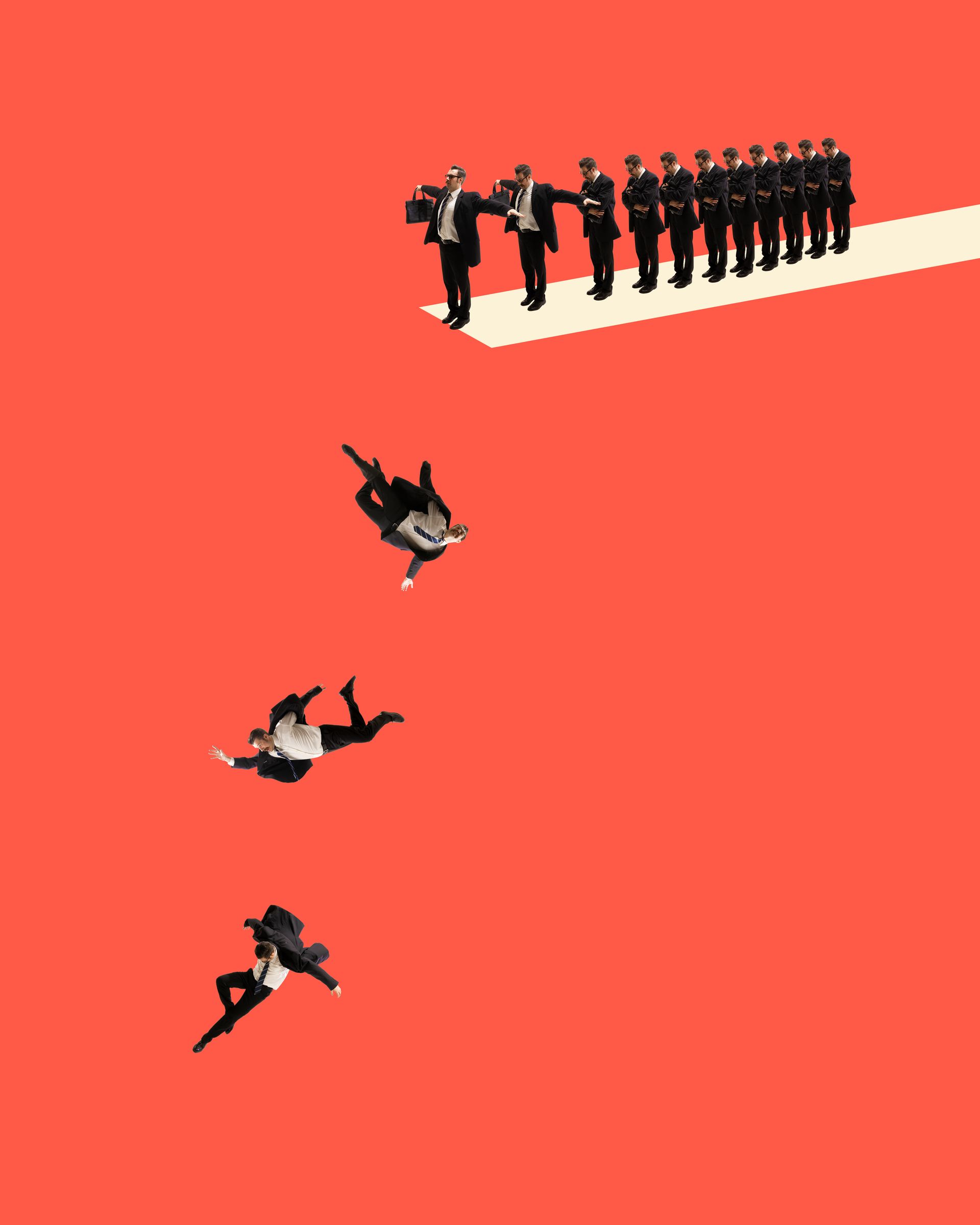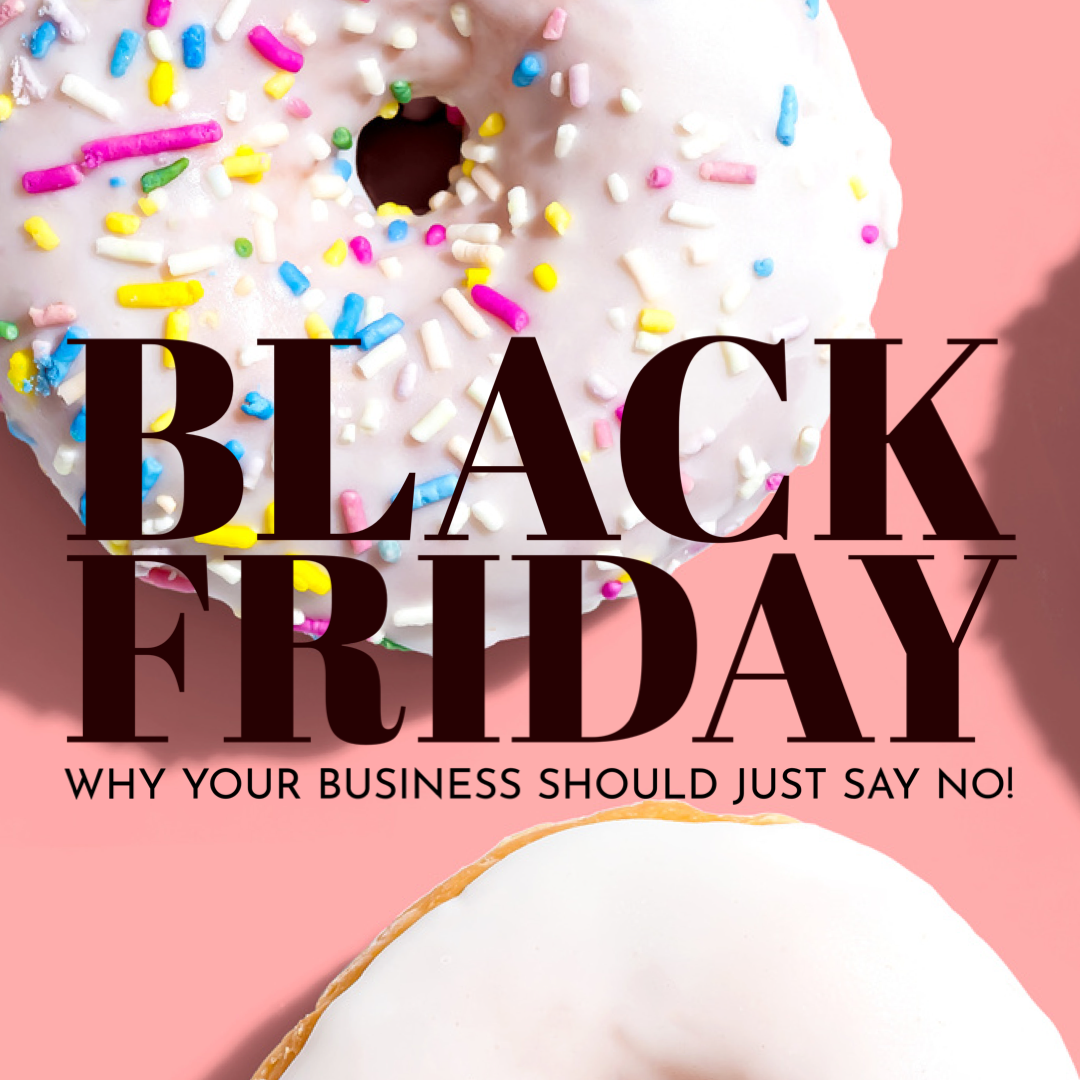SHARP THINKING,
NEW IDEAS
Insights and opinions, written to help you cut through the noise and focus on what really drives progress.

Warning, if you’re not one of the 7 million people who watched Celeb Traitor’s live last week (look at you go terrestrial telly!) you might want to scroll on. For everyone else, here are my top five comparisons between the castle and the average workplace. Alan and Paloma: when friendship and politics mix Alan Carr murdering Paloma Faith early on is the perfect example of how proximity and power collide. They were friends. They laughed together. Worked together. Seemed inseparable. He killed her anyway. Not maliciously or even strategically, she was just an easy target, and he needed to save his own skin. Because in Traitors, like work, beware the relationships that only last as long as they’re useful. Charisma isn’t integrity, and “getting on well” doesn’t mean “aligned.” We’ve all had a ‘mate’ at work like Alan: funny, charming, likeable and the next minute torching your project to get ahead. Sh*t! Jonathan Ross vs Ruth Codd: the calm, the storm, and the power dynamic Jonathan Ross is now facing heat, definitely helped along by Ruth Codd going in on him! She had a point, she just didn’t land it. Ruth got angry, frustrated, emotional. Jonathan stayed calm, almost detached. And that was it: in the group’s eyes, the rational one won. But watch it again. That wasn’t calm; it was control. Ruth’s younger, newer, female. Jonathan’s older, famous, a man of the establishment. It was a masterclass in unspoken hierarchy and how people can manipulate the unconscious bias of everyone around them. So many meetings have that moment: one person fighting to be heard while another takes over, with zero merit, because they have privilege and a power dynamic you can’t beat. Bums!

As my nan used to say - you can tell a lot about a place from its toilets. And it's fair to say, when it comes to experiences, I'm obsessed with them. You might arrive at a beautiful office, a busy café, or a slick visitor attraction. The welcome is polished, the branding sharp, the service rehearsed. And then you slip away to the loo and suddenly you see the truth. A broken lock. A soap dispenser that hasn’t been filled in days. A faded Covid sign still taped to the mirror like a ghost of 2020. All the polish of the front-of-house vanishes. Because if they’ve stopped noticing here, what else have they stopped noticing? Why toilets punch above their weight Toilets don’t get design awards (often), they don’t appear on campaign mood boards, and they rarely make the budget spreadsheet. Yet they shape experience and demonstrate culture more than almost any other space. The numbers prove it: over 80% of facility complaints relate to toilets, and more than four in five people say a bad loo puts them off returning. In restaurants and hospitality, dirty toilets cut repeat visits by around 20%. Psychologists call it the Peak-End Rule: people judge experiences by their extremes and by how they end. Which makes the loo dangerous territory. For many customers, it’s the last stop before they leave. If the final impression is disappointment - no soap, a cracked seat, the faint smell of neglect (or worse), that’s what tips the memory from positive to no thanks. The workplace test In offices, toilets are culture in miniature. An employer can talk endlessly about wellbeing, inclusion, and values, but the loos tell the truth. Free sanitary products? Clean mirrors? Lighting that flatters rather than exposes? These are the signals staff notice every day. They’re not perks; they’re respect. And don’t start me on the signs telling people to clean up after themselves. Really? Are we dealing with adults or running a nursery? More often than not it’s a response to one incident with one person, and the rest of the workforce gets a lifetime of infantilising posters. That says more about the culture than the mess ever did. Employees don’t measure culture by the slogans on the wall. They measure it by whether the hand dryer works.

Every business faces the same question when planning for the year ahead: what should we spend on marketing? There isn’t a clean-cut answer. Nobody has the formula that guarantees growth. What matters is whether your budget matches the growth you’re actually chasing. From a sales and marketing perspective, most small to mid-sized businesses sit in one of three lanes: Zero, Incremental, or Exceptional. Smaller businesses tend to hover in zero, the more established ones work in incremental, and only a bold few step into exceptional. The trick is not which lane you choose, but whether you’re honest about being in it. Zero: hoping for the best Zero is the lane of survival. Most micro-SMEs end up here by default. Marketing isn’t in the budget, it’s something the founder (or another willing team member) crams into evenings and weekends. Social posts, the odd flyer, and a heavy reliance on word of mouth or personal networks. The problem is that “no budget” never really means no cost. It means you’re paying in hidden ways: slower sales cycles because there’s no air cover for the pipeline, lost opportunities because potential customers don’t know you exist, and founder time that disappears into DIY marketing instead of running the business. Zero can sustain you. It can keep the lights on. But very few businesses scale out of this lane without committing something more deliberate. Survival simply isn’t the same as growth. Incremental: the steady road Incremental growth is where SMEs start to get serious. If you’re getting serious your budget should be within 4–7% of your revenue, which is enough to create rhythm: SEO that doesn’t get forgotten, email that lands every month, campaigns that repeat, and the odd test of a new channel. Sales still lean on retention and referrals, but with more discipline in the pipeline you’ll create more cause and effect. Gail’s Bakery is a brilliant lesson in what incremental looks like at its best. The first site opened in Hampstead in 2005, but for years it was just a few shops in North London. The real shift came in 2011 when external investment gave Gail’s the capital to expand carefully, bakery by bakery. Each new shop was chosen with precision: affluent commuter towns, established London neighbourhoods, places where the brand could bed in rather than overreach - all critical (and often overlooked) essentials of marketing. That’s why today, when you walk through Marlow, Clapham, or St Albans, you can’t miss a Gail’s. It feels like they’re everywhere, but it’s been twenty years of patient, disciplined growth. Incremental doesn’t make headlines in year one, but it compounds until suddenly the brand feels unavoidable. Exceptional: the bold bet Exceptional growth is when we choose to accelerate. Marketing budgets rise to 10–15% of revenue or more, and that spend is matched with operational readiness and, crucially, risk appetite. This lane buys visibility, reach, and cultural momentum if you’re willing to back it. Take Gymshark. The myth will have you believe it was entirely organic; a teenager in a Birmingham garage who struck gold through social media alone. It wasn’t. The truth is more complex. Yes, Ben Francis built a community, but Gymshark also spent aggressively on influencer partnerships, international events, and flagship stores to cement its place. That growth wasn’t accidental or free; it was funded, risky, and carefully engineered. Lucky Saint shows the same dynamic in another category. Founded in 2018, it positioned itself as a credible, grown-up alcohol-free beer in a space dominated by mass brands. From early on, Lucky Saint invested heavily in brand and experience: PR, creative partnerships, and eventually a bricks-and-mortar pub in London. For a small brewer, that’s a bold move, but it paid off. The spend signalled ambition, and the market responded. Exceptional growth isn’t a casual decision. It means bigger budgets, more risk, and a level of operational readiness that many SMEs underestimate. But when ambition and investment line up, it creates step-change growth that incremental spend rarely delivers. The mismatch trap If you’re reading this with huge ambition and a budget line of zero, it’s time for a check-in. The biggest problems happen not when you choose a lane, but when you kid yourself about which lane you’re in. Champagne ambition, beer budget. Some businesses set accelerated growth targets but fund them with incremental budgets. The marketing team (if there even is one) is told to double awareness or leads on the same spend as last year, or to land national coverage with nothing more than local-level funds. It creates frustration, wasted energy, and the creeping belief that “marketing doesn’t work,” when in truth it was never resourced to match the ambition. Champagne budget, no hangover cure. Others do the opposite. They throw big money at marketing while the rest of the business is still built for incremental growth. Leads flow in, awareness rises, but operations can’t deliver the experience. Customer service cracks, delivery timelines slip, and the reputation you just paid to build is quickly eroded. Exceptional marketing without exceptional operations doesn’t accelerate growth; it accelerates churn. Hope springs eternal. Then there’s the subtler trap of sitting in zero while planning for growth. A founder convinces themselves that word of mouth will carry them through another year, while quietly expecting sales to grow 20%. When it doesn’t happen, the blame gets pointed everywhere except the missing budget line. You can’t compound visibility you never paid for in the first place. Planning for the year ahead Budgets are signals of intent. They tell your team, and yourself, whether you’re serious about survival, steady growth, or acceleration. They set expectations for sales, operations, and delivery before a single social post goes live. If you’re one of the 1000s of SMEs working on next year’s plans right now and you’re unsure whether your budget matches your ambition, that’s exactly where Perspective Analysis comes in. We stress-test your business for growth, help bring clarity to which lane you’re really in, and align sales, marketing and ops so your plan has a fighting chance of working. If you want a defensible budget and a growth plan that holds up past January, start with Perspective Analysis.

The surveys say SMEs are resilient - and we are. According to The Times, 68% of SME leaders are feeling confident and believe their businesses can withstand “further shocks”. And let’s face it, over the last few years we’ve weathered some: Covid lockdowns, inflation spikes, energy costs, supply chain crunches, Liz Truss (!), and a tech hype cycle that promised the world and often delivered more disruption than clarity. Our work with SMEs tells us something more nuanced than the headline suggests: we can survive another storm, but we don’t want to. Constant firefighting is unsustainable. We’ve run Perspective Analysis with SMEs for the past five years. It’s our diagnostic that reviews businesses across 180 data points, highlighting where we thrive and where we struggle. Layer that with the wider trend data we track, and a picture starts to form of the issues we’ll all be facing in 2026. And despite all the noise, this isn’t about AI. AI is a tool for the future, not the be-all and end-all. The fundamentals that will make or break us are much more human: planning, leadership, people, money, and the capacity to keep moving without burning out. When your leadership plate is already full, these are the fundamentals we believe will make the difference in 2026. 1. Planning as a Living Process Too many of us still spend months producing static, 50-page plans that end up on a shelf. Some set ambitious sales targets but leave out the actions that would make them real. Others simply roll from year end to year start as if nothing has changed. None of it works. What we’ve seen instead and what will define the most successful SMEs in 2026 is a shift to shorter planning cycles. Quarterly or six-monthly reviews anchored in a long-term vision, not just an annual ritual. This rhythm makes us more resilient to our business specific shocks like sudden cost hikes or a key person leaving; the kind of changes that barely dent corporates but can throw SMEs off balance. Research shows that companies revisiting strategy quarterly are three and a half times more likely to report above-average growth. That’s the difference between a plan as a document and a plan as a living process. Question to ask ourselves: How often are we really stepping back to check if our plan still fits the reality we’re in? 2. Execution Gaps Strategies rarely fail because they’re bad. They fail because they never get delivered. We see this execution gap everywhere: visionary leaders running ahead of their teams, boards that don’t translate decisions down a level, or leaders who underestimate the communication skills needed to bring people with them. Calling these “soft skills” undersells their importance. In a world where tech can automate processes but can’t inspire or align people, the ability to translate strategy is non-negotiable. McKinsey estimate that 70% of strategies fail in execution, and poor communication is one of the main reasons. For SMEs, where layers of management are thin or absent, that failure rate could feel even harsher. Question to ask ourselves: What’s the biggest reason our strategy might die between the boardroom and the front line? 3. Capacity Reality Checks Most of us are already running at full tilt. 62% of SMEs see staffing and capacity as their biggest barrier to growth and it shows. Ideas for growth sound simple ‘in the room’ when they’re devised but once broken down into working days they pile onto already stretched teams. AI may ease some of the load, but it also tempts us into over-committing, assuming the tech can carry more than it really does. The real competitive edge in 2026 will be the businesses that honestly measure capacity, set realistic plans, and protect the human energy that makes execution possible. Question to ask ourselves: Do we actually know our team’s capacity or are we just piling more on and hoping it sticks? 4. Short-Termism Risk After years of reacting to crisis after crisis, it’s no surprise that short-termism takes hold. Economic uncertainty keeps pulling us into tactical, quarter-by-quarter decision-making. Too often, “vision” is treated as a marketing strapline rather than the driver of the business. The result is fragmented focus: chasing sales without really understanding why customers buy, hustling to survive without pausing to think. The British Business Bank found in 2025 that almost half of UK SMEs set their planning horizons at 12 months or less. That may feel safe, but in practice it means firefighting instead of steering. Question to ask ourselves: What’s the anchor that will keep us from reacting our way through 2026? 5. Financial Fluency The ability to read the P&L isn't absent in SMEs, but it is often a weak spot as it’s not our first love. Finance functions can lean towards control rather than ambition, and many leaders are not fully confident on the basics of margin, cash flow, and pricing. Pricing too often finger-in-the-air when it should be treated as part of the marketing strategy (honestly – marketing isn’t just about your social media channels). And cash can be overestimated or underestimated in equal measure - sometimes treated as the only thing that matters, other times ignored until it’s too late. Finance will continue to be one of the biggest fault lines. CB Insights analysis shows that 82% of small business failures are linked to cash flow mismanagement. In a climate where shocks to costs and sales are still likely, financial fluency will be the dividing line between resilience and fragility. Question to ask ourselves: Do we, as leaders, really understand the numbers that matter or are we still outsourcing confidence to finance? 6. Key Figure Reliance It isn’t just founders. Any SME leaning too heavily on one key individual - the founder, the MD, or the star operator will remain brittle. When that person is absent, fatigued, or distracted, everything wobbles: decisions slip, people get unmanaged, balls get dropped. PwC’s Family Business Survey found that 58% of SMEs have no succession plan in place. That number underlines the risk: relying on one person to hold everything together is not a strategy. After years of survival being carried on individual shoulders, 2026 must be the year where leadership depth becomes a priority. Question to ask ourselves: If our key person walked away tomorrow, what would actually break? 7. People Strategy as Core Strategy Hiring, culture, capability-building, mentoring and coaching are moving from “HR admin” to the heart of the business plan. In SMEs, where every hire counts and culture is set by how we work together, these choices directly shape performance. AI is already taking a scythe to whole industries, stripping out roles, processes and in some cases entire business models. That makes taking care of people non-negotiable. If technology is redefining what jobs look like, we must keep our people skilled, engaged and clear about where they fit in the future. The CIPD’s Learning at Work report found SMEs investing in training see productivity rise by nearly a quarter compared to peers who don’t. That’s why in 2026, people strategy won’t be optional. It will be the strategy. Especially after years of attrition, fatigue and pressure, keeping people engaged and capable is the only way through. Question to ask ourselves: How are we deliberately building capability and resilience in our people, not just relying on goodwill to carry us through? 8. Change Fatigue Covid, inflation, energy shocks, supply chain crunches, tech hype - the past four years have been relentless. Teams have adapted again and again, but resilience has a limit. We’re already seeing the drag of constant pivots and restructures. Deloitte’s research found that 73% of employees report moderate to high levels of change fatigue. For SMEs, which often move faster and harder than corporates, that fatigue will be even sharper in 2026. After so many storms, leaders who don’t acknowledge fatigue risk disengagement, that no amount of resilience can patch over. Question to ask ourselves: Can we tell the difference between a team that’s adapting and a team that’s simply exhausted? 9. Scenario Planning Becomes Normal Hope is not a strategy. After years of 'shocks', contingency planning is becoming normal in SMEs, not just something large corporates do. “What if” scenarios around losing a client, costs doubling, or a supplier failing are shifting from theoretical to routine. Barclays’ SME Pulse reported that the proportion of SMEs with formal contingency plans rose from 26% in 2020 to 45% in 2024. That trend reflects lived experience: after four years of turbulence, none of us want to be caught out again - and it's here to stay through to 2026. Question to ask ourselves: What’s the one “what if” scenario we’re least prepared for and why? 10. Measurement That Moves the Needle Dashboards aren’t the problem - irrelevant dashboards are. The shift we’re seeing is away from vanity metrics and towards lean, decision-driving indicators. The dashboards that matter in 2026 will be the ones that directly move the needle, not just track activity for the sake of it. Gartner’s 2023 survey found that 67% of leaders experience “dashboard fatigue” from tracking too many metrics. The lesson for us is clear: measurement only matters if it drives action, especially when the cost of wasted energy is higher than ever. Question to ask ourselves: Which of our dashboards actually changes decisions and which are just noise? The Bottom Line We know SMEs can survive storms - we’ve been doing it for years. But resilience alone is not enough. After years of firefighting, the leaders we'll see thriving in 2026 will be the ones tackling these fundamentals head-on: keeping planning alive, closing the execution gap, setting realistic capacity, anchoring to vision, building financial fluency, reducing reliance on key figures, making people strategy central, pacing change, planning for scenarios, and measuring what matters. Because surviving storms is one thing. Choosing not to live in permanent firefighting mode is another.

You are not failing. Even when it feels like it. You’re just in the thick of it. And the thick of it is where most of us spend most of our time - but no one tells you that. You’re told to pick a niche, find your purpose, raise your prices, write a personal brand strategy, become a thought leader, optimise your funnel, outsource your admin, scale faster, scale smaller, scale something. There’s a formula, apparently. But no one seems to want to tell you what it is without paying £27.99 a month and let’s face it, you know it’s crap! Meanwhile, you’re doing strategy one minute and chasing an unpaid invoice the next. You’re fixing the printer. You’re covering reception. You’re trying to forecast VAT payments that land like a piano falling from a window. You feel like you work for HMRC more than you work for yourself. You look around and everyone else seems sorted. Confident. Clear. Making money. You’re wondering if they’re faking it. You’re wondering if you are. And it’s lonely. Deeply, quietly lonely. Even when you have people around you, even when you have a team, even when things are ‘fine’. Because no one else really sees it the way you do. The weight of it. The relentlessness of it. The thousand things a day that pass through your mind that don’t pass through anyone else’s. The pressure to keep it together for everyone else while wondering how long you can do that for. But also: the moments. When it’s flying. When you win something unexpected. When you say something that makes a client’s eyes light up. When you see someone on your team grow. When you remember why you started. When it feels like maybe, just maybe, you’re on to something. Feast and famine. Elation and fear. Boredom and adrenaline. The cycles are weird, and unfair, and rarely make sense. But they’re real. If you’re in a hard patch right now, it doesn’t mean you’ve done something wrong. It doesn’t mean you’re not good enough, or smart enough, or ambitious enough. It means you’re doing something difficult and you’re still here. Maybe you don’t need to pivot. Maybe you don’t need to burn it all down. Maybe you just need to take a breath. Look again. Reassess. Strip it back to what matters. And know that this stretch won’t last forever. Running a business is the best and hardest thing you can do. It will teach you more about yourself than you ever asked to learn. And it will stretch you in ways no job ever could. If you’re tired, you’re not weak. If you’re stuck, you’re not broken . If you’re still trying, you’re already doing more than most. We see you. You’re not alone. And even if no one’s said it in a while - you’re doing brilliantly. Love Equipt x

Most writing about client service follows the same well-trodden path: say yes more. Smile more. Show up and serve. Think Nordstrom, Ritz-Carlton, or any other brand that made its name on “the customer is always right.” And while that works beautifully in retail or hospitality, in a strategic consultancy or marketing agency, it’s completely the wrong model. The best client service doesn’t come from being agreeable. It comes from being useful, honest, commercially aware, sometimes awkward and a little bit brave. SME News just named us Most Innovative Brand Growth Consultancy and gave us an Excellence in Client Impact & Service award, and it’s not because we do whatever we’re asked. It’s because we always try to give the best advice, even when it’s uncomfortable. In honour of our win and for anyone working in or looking for a crack client services team, here’s what we think great client service is really about. Clarity, Not Pleasing Clients don’t need us to agree with them. They need us to make things clear. Clarity is one of the most underrated skills in client service. It means being able to say: here’s what’s in scope, here’s what’s not, here’s what will move the dial, here’s what’s just noise. But to do that well, you need real marketing knowledge and that’s something not every client services person starts with. If you didn’t come from a marketing background or have formal training, it’s on you to learn. Read. Ask questions. Understand the why behind the work. Because without that strategic depth, you risk becoming a project manager, just delivering what the client asked for, rather than what they really need. And right now, that’s a dangerous place to sit. If you’re only executing instructions, AI can do that faster and cheaper. Your value comes from seeing what’s not being said. Reading between the lines. Knowing the market context. Spotting the bigger picture. That’s what clients will pay for and what will set you apart. A brilliant client service lead sets the pace, defines the shape of the work, and keeps everyone pointed in the same direction especially when things get busy or messy! Challenge with Care Good client service means being able to say, “That’s not right.” Internally and externally. Because if we don’t challenge the work, the strategy, or the thinking – who will? Inside the team, that challenge needs to come from a solid place. Not just “the client won’t like blue,” but grounded commercial thinking. If there’s no strong reason to push back, then creative and strategy teams deserve the freedom to be bold and radical. Externally, it’s about equipping the client to be brave, with proof points, with clarity, with the kind of rationale they can use to fight for great work inside their organisation. This is where Radical Candour comes in: care personally, challenge directly. You challenge because you’re invested, because you care enough to stop something going out into the world that isn’t good enough. Junior team members often worry that challenging might upset someone, but real client partnership is about honesty, not harmony. Creative work is a classic example. A client likes two ideas, asks to blend them, and the result is a compromise that feels inoffensive – and completely forgettable. It’s our job to ask the uncomfortable question: “Does this make anyone feel anything?” If it doesn’t, then it’s not doing its job. The role of client service isn’t to protect the relationship at all costs, it’s to protect the impact of the work. When we avoid challenge, we don’t just risk bland output, we also waste time, money, and momentum. Clear, brave, respectful challenge is part of what builds trust. And without it, the work – and the relationship – suffers. Commercial Awareness We’re here to create impact – not just output. For years, agencies have run on time and materials – a model that’s increasingly hard to defend. Not just because it’s clunky or hard to forecast, but because it’s reductive. If someone with 27 years of experience can crack something in a few hours, is that worth less than someone who takes three days? Of course not. But time-based pricing suggests it is. And that’s dangerous – because it erodes the value of experience, judgement, and the very thing clients come to us for. Add to that the fact that most people genuinely don’t know how long things take – a known issue in behavioural science, where planning fallacy and optimism bias skew how we scope, quote, and plan work. And now we’re in a world where systems can do things faster, briefs are changing mid-flight, and the “just get it done” mindset puts pressure on people, not quality. If we don’t reframe how we talk about value, we’ll end up getting cheaper – not better. Commercially aware client service isn’t about becoming salespeople. It’s about getting braver at talking about value. Because yes, clients might say something’s “expensive” – but ask whether it’s worth it, and you’ll often get a different answer. When you can explain why something matters, where it moves the needle, and how it creates return – that’s when trust deepens, budgets unlock, and relationships shift from transactional to strategic. And in marketing especially, this matters more than ever. Because everyone thinks they’ve got a good eye or can use a Canva template, but brand, positioning, strategy and creative direction are serious commercial tools. And when we don’t treat them that way, we end up underpriced, undervalued, and under pressure.

We’ve spent the last few years analysing SMEs across ten critical areas of growth – from strategy and brand to operations, finance, people and customer experience. It’s part of a tool we built called Perspective Analysis, designed to help businesses grow and build in a more agile, intentional ways. Now that we’ve used it with dozens of founder-led teams, agencies, charities and commercial ventures, the data’s starting to speak. And the same themes keep showing up - they cut across sector, size and leadership style. What’s most interesting is that what holds business back isn’t always obvious, even from the inside. Here are seven of the most common blind spots we’ve uncovered – and what they mean for growth-minded organisations today.

For many small and medium-sized businesses, 'brand' often stops at logos, colours, or fonts. While these visual elements are crucial, they're only scratching the surface of what your brand truly is and can achieve. In Britain, SMEs represent a staggering 99.8% of all businesses, yet close to 45% unfortunately don't make it past their first five years, which is why it’s critical to build a robust foundation from day one. Shifting our perspective of brand as a mere ‘identity’ to being a strategic and commercial asset, that should weave through every part of business, will help to secure long term success and hopefully beat some of those ‘early days’ odds. Why does this shift in thinking matter so much for long-term growth? It Builds Tangible Value: When you start treating your brand as a commercial asset, something wonderful happens: it’s worth grows! Simply having a consistent presentation across all your platforms can lift your revenue by up to 23%. Strong brands naturally command more market value and can become a real magnet for potential investors. Ultimately, it's about building equity that extends far beyond just your physical assets. It cultivates deep customer loyalty: At its heart, branding is all about building trust and forging a genuine connection. When customers truly trust your brand (roughly 81% need to trust a brand before even considering a purchase), they're far more likely to come back to you repeatedly. Not only do loyal customers spend more, but they're also your biggest cheerleaders, keen to try new offerings and acting as powerful advocates for your business. Just a 5% increase in customer retention can significantly boost profits (normally anywhere between 25-95%!). It Drives Strategic Decisions: When you embrace a commercial view of your brand, it naturally encourages a smarter, data-driven approach. You'll begin tracking how your brand performs, understanding customer sentiment, and pinpointing your market position. This valuable insight unlocks much smarter decisions about your marketing efforts, where you allocate resources, and your overarching business strategy. It Fosters Internal Alignment & Motivation: A strong, clearly defined brand isn't just for your customers; it inspires your team from within. When your employees genuinely understand and believe in your brand's mission and values, they feel a deeper sense of pride and become much more engaged. This, in turn, translates into better performance and an even richer customer experience. It Creates Resilience: Think of a well-established brand as a powerful shield, protecting your business against unexpected market fluctuations and tough competition. It provides the agility to adapt more effectively to changing trends and evolving customer needs, ultimately ensuring long-term sustainability and peace of mind. For any SME aiming for sustained success, embracing this commercial lens for your brand isn't just a nice-to-have – it's fundamental. It's the key that unlocks real growth, builds unwavering loyalty, helps you attract top talent and investment, and ultimately creates a business that's both more resilient and valuable. Your brand is so much more than just how you look; it's how you operate, how you connect, and how you grow. Finally, if you're reading this thinking "it all makes sense but I have no idea where to begin", then get in touch! Our business reset days are designed to help businesses build growth plans, one step at a time. Send us an email

Back in the 90s, Sex and the City was a breakthrough. Whatever you think of it now, at the time no one was writing young women as they really were. Flawed, complicated, ambitious, messy, funny, obsessed with friendship as much as relationships, a bit self-absorbed, a lot hopeful. Under the gloss, it felt real. And crucially, it didn’t just reflect culture. It shaped it. Before Carrie Bradshaw, hardly anyone had heard of Manolo Blahnik. After SATC? Sales jumped 300%. No one went to Magnolia Bakery for overpriced cupcakes. One episode later? Queues down the road and the global boutique cupcake trend was born. Cosmopolitans weren’t the signature drink of the era until SATC made them so (they’re still bloody good by the way). Bar sales soared, and suddenly everyone was sipping pink cocktails. SATC didn’t just tell stories. It made culture. It sold shoes, cocktails, cupcakes and more, but more importantly, it sold possibility. It put women’s lives, conversations, friendships and experiences centre stage and brands followed the cultural mood it was setting – we all wanted a piece and we felt seen like never before. Which makes it more depressing that And Just Like That, the SATC follow-up, a programme basically about middle-aged women, has landed with such a dull, stereotyped thud. Rabid mums gaming college admissions. Sad single women with cats. Women who’ve ‘given it all up’ to work in charities and don’t start us on the ham-fisted portrayal of anyone and everyone who might be labelled LGBTQIA+. Where’s our moment? Who is writing our lives now? I'm getting to the point, honest.

I went to a great trends briefing from Mintel yesterday. And while it was packed with data, one thing stood out: there’s not a lot of new out there. Consumers are still cautious, still buying with care, and still leaning on familiar behaviours. This isn’t a market racing ahead. It’s steady as she goes. And that’s exactly why it’s worth paying attention. So we’ve taken the six key signals from Mintel’s update and turned them into something a bit more interactive - think Choose Your Own Adventure, but for your business. Whether you run a consumer brand, a B2B company or an agency, these are the questions worth asking now across your brand, your team, your operations and your commercial foundations.

I grow tomatoes. Among other things (courgettes, beans, the occasional reckless attempt at a loofah), but tomatoes are the ones that get me every year. There’s something about being in the greenhouse, musing about life while eyeing up the first tiny shoots, that feels strangely close to running a business. You start with a simple idea: you want something to grow. More customers. More revenue. More impact. But real growth doesn’t happen by accident. It’s not about hoping, or liking the idea, or having the best intentions. How you grow, why you grow, and where you’re heading, that’s where the real work begins. It’s exactly like deciding you want tomatoes. The idea’s easy. The outcome sounds delicious. But wanting tomatoes isn’t the same as growing them. And wanting a successful business isn’t the same as building one with real vision. The Dream Without the Doing Some people say they want tomatoes, but they don’t do anything about it. They like the idea. They read articles. They watch inspirational reels. But they never plant anything. They haven’t prepared the soil or even visited the garden centre. The idea just sits there, quietly doing nothing. In business, it’s no different. Teams say they need a vision but carry on exactly as before, too busy, too distracted, always pushing it to 'later' when the mythical perfect moment appears. No tomatoes. No vision. Just another missed opportunity by next season. The Token Effort Others go one step further. They throw a seed into the soil, feel quietly pleased with themselves, and then walk away, expecting nature to do the rest. Sometimes a fragile shoot appears. Most times, nothing much happens. It’s the same when a leadership team sets a vision once, shares it in a PowerPoint deck, and expects the culture to shift by itself. A month later, they’re wondering why nobody seems particularly energised. Because seeds (and people) need more than a one-off announcement to grow. Losing Focus Along the Way Even when you start strong, the danger isn’t over. You water the seed, you watch it sprout, you admire your own commitment, and then life gets busy. You forget. The plant struggles without you. Businesses do the same. They launch a bold vision, full of energy, and then get distracted by the noise of everyday operations. Decisions drift away from the big goal. Growth slows. The energy leaks away. And everyone who was promised an abundant tomato season starts to feel quietly cheated. The Hard Part No One Tells You About Sometimes you stick with it longer. The plant grows tall. It looks healthy. Then the weather turns. Pests arrive. Maybe a bit of blossom end rot sets in (yes, it’s a thing) or your bush is massive but there’s no fruit (insert own juvenile joke here). It all feels harder than it should. And giving up starts to look like the simpler, more sensible option. In business, this is the moment when external pressure, internal politics, or simple fatigue start testing your leadership. This is where a real vision either holds or folds. The Reality of Real Growth Proper growing isn’t glamorous. You don’t get quick wins or shortcuts. You show up consistently. You water carefully (not too much and not too little). You adapt when the weather shifts. You prune back the parts that don’t serve the bigger goal. You don’t just act when it’s exciting. You act when it’s tedious, inconvenient, or frankly, the last thing you want to deal with. And that’s exactly how real business vision works too. Not as a slogan. Not as a launch event. As quiet, steady leadership, lived out when it matters most.

Is social your main channel for sales? It’s big trouble for small businesses. Instagram, TikTok, Facebook. They’re visually appealing, where everyone seems to be, and they feel like the perfect place to showcase your amazing products. It’s no wonder that in recent years, small businesses have faithfully jumped headfirst into social as their primary (or even only) sales platform. While each platform can be a powerful tool, relying solely on social for sales is like putting all your eggs into one filter-heavy basket, where your business is the only element at risk of getting scrambled. Here’s why: 1. You're not (and NEVER will be) in control of the algorithm The social algorithms are fickle beasts. They change constantly, so what worked last week might be invisible to your followers today. In the most recent Instagram change, our feed was flooded by posts from small business owners, apologising for not ‘being present’ as they grappled to find extra hours for re-sizing grid images from square to rectangle (P.S. If you haven’t resized your grid images yet, don’t bother because no-one cares anyway.) One change to the algorithm can mean that overnight, your beautifully crafted content isn’t reaching your target audience anymore, and the impact on sales is noticeable. You're at the mercy of a system you don't control, making consistent revenue generation a real challenge. When unpredictability rules over cash flow, financial forecasting and future business planning become the stuff of nightmares. 2. Platform Dependence - what if it disappeared? What nonsense, we hear you mutter… well, the truth is that social media platforms come and go. While social platforms seem dominant now, there's NO guarantee it will be the same for your target audience in five years (Facebook falls behind TikTok, Instagram and SnapChat across the 16-24 age bracket compared to 5 years ago, for instance). Building your business on a platform you don't own is incredibly risky. If that platform were to disappear or drastically change its functionality, your business could be severely impacted.

This week, we have spent time with small business owners and startups - people brimming with ambition and a vision to create brilliant, bespoke experiences through their businesses. These are not cookie-cutter enterprises; they’re driven by passion, artistry, and a deep desire to deliver something meaningful. Yet, we’re increasingly noticing the business owners we’re working with are trapped in the relentless grip of ‘hustle’. They’re constantly challenged by the pressure to do more, to expand faster, to keep pushing without pause. It’s exhausting. In these conversations, we’ve asked a powerful and deceptively simple question: ‘What feeds your soul?’ It’s a question that demands reflection beyond profit margins and growth strategies. Ambition is important - but whose terms are you building on? Are you chasing someone else’s version of success, or are you shaping a vision of richness and ambition that aligns with your values and your life? The Problem with More Psychologists have long studied the phenomenon of how quickly we adapt to material gains. You’ve probably experienced it yourself: after a big purchase, you feel a rush of excitement. But within days or weeks, that excitement fades. The new car, the luxury watch, or even a business milestone, all begin to feel ordinary. This phenomenon is known as hedonic adaptation, and it can be one of the most insidious traps in business and life. For instance, we probably feel elated after securing a major client but soon find that excitement replaced by new stressors as the business puts pressure on for yet another win. The constant push for ‘more’ never truly satisfies because the goalposts keep moving. Hedonic adaptation happens because our minds normalise both positive and negative circumstances. Once something becomes part of our daily life, our expectations shift, and the novelty wears off. This explains why career achievements, like promotions or hitting revenue targets, may bring fleeting joy but quickly give way to new pressures and desires. The cycle continues unless we take steps to break free. It’s not just expectation shifts that contribute to this treadmill effect. Our tendency to compare ourselves to others erodes appreciation for what we already have. It’s easy to feel dissatisfied when success is measured against someone else’s highlight reel. You know the ones: ‘I make six figures a month and you can too.’ These messages creep into our mindset, subtly planting the idea that if we’re not there yet, we’re somehow falling short. Thankfully there is there are ways to slow the treadmill and shift focus back to what really matters. Gratitude, practised regularly, is a powerful tool. It reorients our minds to appreciate what we have instead of what we’re missing. Similarly, focusing on experiences rather than possessions can create more lasting joy. Unlike material things, experiences become more meaningful over time as they shape our memories and identity. Pursuing goals that are intrinsic, tied to personal growth or connection rather than external validation, also helps break the cycle. Mindfulness, too, plays a role by bringing awareness to the present moment, grounding us in appreciation and reducing the relentless chase for ‘more’. Reconsidering Richness and the Journey So, what does richness mean if not in terms of wealth or accolades? For some of us, it’s time - time to be present with family, time to create without deadlines looming, time to savour life. For others, it’s the quality of experiences: supporting brands that reflect their values, building a business that nurtures rather than drains, spending energy on meaningful connections instead of grow at any cost. This isn’t just a personal issue. We’re seeing this pattern magnified on the world stage. Billionaires like Elon Musk seem trapped in an endless loop of ambition, unable to rest despite having achieved more than most people can even imagine. Space, social media platforms, AI - it’s as if ruling the world isn’t enough anymore. The same mindset infects business culture everywhere: the idea that success means never stopping, is fundamentally flawed. So, when will it stop? When will we finally breathe and say, “Enough is enough”? When will we allow ourselves to dream a vision that is not about domination or endless expansion, but about creating something that’s fulfilling and sustainable? It’s crucial to recognise that the journey itself is just as important as the goal. Often, we become so focused on achieving milestones that we forget to enjoy and learn from the process. Reflecting on the journey allows us to appreciate growth, resilience, and the relationships we build along the way. Celebrating milestones, such as completing a significant project or receiving positive client feedback, can provide renewed motivation and a sense of accomplishment. There’s richness in these moments that hustle culture tends to overlook.

It’s a staggering paradox: research shows that 70% of businesses that survive beyond five years attribute their success to having a strategic plan, yet 65% of SMEs admit they don’t have one. This glaring disconnect raises an important question: why do so many businesses avoid writing business plans, even when the evidence overwhelmingly supports their value? For many, running a business without a plan is like diving into the unknown without a map or compass. While the initial leap may feel exciting, the lack of direction quickly turns into uncertainty, wasted effort, and missed opportunities. THE MYTHS AND MISCONCEPTIONS ABOUT PLANNING For many, the reluctance stems from common myths about the planning process: “It’s Too Time-Consuming” Entrepreneurs often see business planning as an overwhelming task that will consume precious time. With so many pressing priorities, creating a formal plan is perceived as a luxury rather than a necessity. “It’s All in My Head” SME owners frequently claim their goals and strategies are clear in their minds. However, without formalising these ideas, they risk overlooking blind spots and missing opportunities. A written plan provides clarity and structure, turning abstract ambitions into actionable strategies. “Planning Is Only for Startups Seeking Investment” While business plans are commonly associated with funding pitches, they serve a far broader purpose. A strategic plan acts as a roadmap, helping businesses align teams, prioritise goals, and maintain focus during periods of growth, change, or challenge. “Planning Can’t Predict the Future” While it’s true that no plan can anticipate every scenario, planning is about preparation, not prediction. By identifying risks and opportunities in advance, businesses can navigate uncertainty with confidence. THE COST OF NOT PLANNING Businesses with a written plan are 30% more likely to achieve growth than those without one. So why take the risk of operating without a clear strategy? The lack of a strategic plan can lead to a myriad of challenges including: Leadership burnout Wasted time and resources Missed opportunities as teams operate without clear direction Difficulty adapting to changes or measuring progress Misalignment across teams, causing inefficiency and frustration Poorer profitability Erosion of the founding company culture PERSPECTIVE ANALYSIS - BREAKS DOWN BARRIERS For those overwhelmed or underwhelmed by traditional planning methods, Perspective Analysis from Equipt offers a fresh approach. Tailored specifically for SMEs, it’s designed to overcome the obstacles that prevent many businesses from planning effectively. Tailored Simplicity Rather than burdening you with complex frameworks, Perspective Analysis focuses on what matters most: your goals, resources, and vision for the future. By breaking the process into manageable steps, it makes planning approachable, actionable and agile. Engaging and Actionable This isn’t a one-size-fits-all solution. Perspective Analysis delivers strategies uniquely tailored to your business. Through workshops and collaborative sessions, the process ensures every step is focused on achieving clarity and driving action. Empowering Insights By encouraging deep reflection, Perspective Analysis uncovers hidden opportunities and risks. This allows businesses to move beyond surface-level plans and develop strategies that deliver meaningful results. A Collaborative Roadmap The process fosters team alignment and shared ownership. By involving key stakeholders, Perspective Analysis ensures everyone is working toward the same objectives, strengthening buy-in and accountability. The Competitive Advantage In a world where only half of businesses survive beyond five years, having a strategic plan can be the difference between thriving and failing. With Perspective Analysis, you can bridge the planning gap, creating a dynamic roadmap that evolves with your business. More than just a plan, Perspective Analysis embeds strategic thinking into your organisation, equipping you to tackle challenges, seize opportunities, and outpace competitors. GET STARTED TODAY If you'd like to join us for a one day Business Plan Bootcamp designed for businesses ready to accelerate their growth - get in touch. The real question isn’t whether you can afford to plan - it’s whether you can afford not to.

I’ve been watching a lot of Christmas films lately. Not unusual for this time of year. There’s something about them that just works, no matter how many times you’ve seen them. You know the endings, you know the characters, yet somehow they still hit the mark. The thing is, they all follow similar story arcs. Whether it’s the Grinch up in his cave, Kevin defending his home, or someone trying to save Christmas, the pattern is there. And for some reason, we love it. It’s got me thinking about why these stories work so well and what happens to us when we hear them. We already know the ending (it’s a Christmas film, after all), but we’re hooked by the journey. Part of that is down to narrative bias. Our brains naturally prefer stories with a clear start, middle, and satisfying end. Even if life is rarely that tidy, stories give us that structure and we can’t help but feel good about it.

If there’s one thing I wish I’d known earlier, both when I was starting out in advertising and later, managing others, it’s that the human brain isn’t fully developed until around age 25. Now that I’m running a mental health charity alongside consulting and training, this knowledge has completely reframed how I think about supporting young talent. Knowing that young professionals are still developing crucial skills, like decision-making, emotional regulation, and impulse control, has helped me make sense of the challenges I faced myself and the struggles I’ve seen others go through. Marketing and advertising are famously tough on young people. We throw them into high-stakes situations and expect them to handle it like seasoned pros, often with minimal support. But by understanding where they’re at developmentally, we can rethink how we work with them. Here’s how we can create a better experience for young talent in our industry. Guided Mentorship and Structure They Can Actually Use Advertising is messy and fast-paced, and I used to assume people would just “figure it out” because that’s what I had to do. But young professionals need structured guidance, clear project outlines, regular check-ins, and support for managing pressure. They’re still building up their decision-making abilities, and the right kind of mentorship makes a huge difference in how they adapt and grow in this environment. Letting Them Dip a Toe In First Marketing roles often give young people big responsibilities from day one, but we’d get so much more out of them if we let them try different things first. Letting them rotate through various tasks, social media, analytics, brainstorming, gives them a chance to see where they really thrive and build a bit of confidence before taking on heavier responsibilities. This approach not only helps them develop more rounded skills but also gives them a better sense of what they actually enjoy. Creating a Culture Where Mistakes Aren’t the End of the World I’ve seen young people take mistakes really hard, thinking a slip-up means they’ve failed spectacularly – snot, ugly crying, the works. Understanding that they’re still learning has made me realise how important it is to create a culture where mistakes are part of the process, not career-ending disasters. When a setback becomes a learning opportunity rather than a crisis, it lowers anxiety, builds resilience, and encourages smart risk-taking, all of which are essential in a creative industry.

Humans have always been captivated by the desire to understand themselves better. This quest for self-knowledge has driven countless philosophical inquiries, religious teachings, and, in our modern era, the widespread appeal of personality tests, zodiac signs, and even those quizzes that tell you if you’re more of a Meat Feast Pizza than a Hawaiian. Whether we admit it or not, most of us have indulged in these seemingly trivial assessments at some point. But what is it about these exercises in self-discovery that draws us in so powerfully? The answer lies in our deep-seated psychological needs for self-discovery, identity, and social belonging, needs that have been integral to the human experience for as long as we’ve existed. The Search for Identity From a young age, we embark on a lifelong journey of forming our identity, our internal compass guiding us through life’s complexities. This identity is built through our experiences, social interactions, and internal reflections. It’s a dynamic entity that evolves as we grow, face new challenges, and gain new insights. As children, we learn about ourselves in relation to others, how we are similar, how we are different, and how we fit into the social fabric around us. These early experiences lay the groundwork for the more complex self-concepts we develop in adulthood. Our experience in the workplace is no different; the broader our experience and the more we connect with new ideas, the richer our pool of information becomes. Despite this ongoing process of identity formation, many of us continue to seek clarity throughout our lives. This is partly because our identities are multifaceted and influenced by various factors, including cultural background, personal values, and life experiences. We may understand ourselves in certain contexts—perhaps as a parent, a professional, or a friend but struggle to integrate these different aspects into a cohesive sense of self. This struggle often leads us to seek out labels, categories, and definitions that help us make sense of who we are and where we fit in the world. Personality quizzes, with their promise of quick insights into our deepest selves, offer an appealing shortcut to this clarity. They provide a way to distil the complexities of our personalities into digestible, relatable terms. Whether it’s understanding our ‘love language’, identifying with a particular Myers-Briggs type, or discovering which Hogwarts house we belong to, these quizzes offer validation and self-affirmation that can be both comforting and empowering. They give us a language to describe ourselves, which in turn helps us communicate who we are to others. The Psychological Appeal of Categorisation The appeal of personality assessments isn’t just about the results they provide, but also about the process of categorisation itself. Psychologically, the need to label ourselves and others, stems from the human brain’s natural ability for categorisation, a cognitive function essential for making sense of the world. Research in cognitive psychology, particularly the work of Eleanor Rosch in the 1970s, has shown that our brains are wired to organise information into groups and patterns. This categorisation helps us navigate the complexity of our environment by simplifying it into manageable parts. When applied to self-knowledge, this need for categorisation becomes a tool for making sense of our inner world. It’s not just about knowing whether we’re introverted or extroverted, but understanding how these traits influence our behaviours, decisions, and relationships. By categorising aspects of our personality, we create a framework that helps us navigate personal and social challenges more effectively. For example, understanding that you’re a ‘Type A’ personality might help explain your competitive nature and drive, while identifying as a ‘Type B’ might shed light on your preference for a more relaxed approach to life. These categories provide us with a sense of identity that is both personal and social. They allow us to see ourselves as part of a larger group whether that’s people who share our Zodiac sign, our Enneagram type, or even our pizza preference. This sense of belonging is crucial for our psychological wellbeing, as it connects us to others who understand and validate our experiences. It’s a way of finding our place in the world, not just as individuals, but as members of a broader community.

When I found myself in Amsterdam, at least twice a month, back in the days of pre-pandemic frequent travel, a saviour of my sanity was without a doubt Airbnb. More space, less formality, the chance to really know a city and cook your own food; made being away from home that little bit better. Their brand differentiator ‘belong anywhere’ was writ large in the end-to-end experience. With shares dipping significantly this week and a disappointing outlook predicted thanks to a soft consumer market in the US, it really got me thinking about Airbnb’s stellar achievements, its ability to survive a global pandemic and what their truly epic brand differentiation might allow them to do next. A little history Airbnb, founded in 2008 by Brian Chesky, Joe Gebbia, and Nathan Blecharczyk, has grown from a small start-up into a global powerhouse and that’s a fact. Its inception was a masterclass in branding and differentiation, positioning itself uniquely in a saturated market. Airbnb's concept was revolutionary: an online marketplace for short-term lodging in private homes. The idea stemmed from the founders' personal experience of renting out an air mattress in their living room to make extra money. This simple, yet innovative idea tapped into the existing but underutilised inventory of spare rooms and entire homes, offering travellers a unique, local experience that hotels could not provide. Branding strategy From the outset, Airbnb’s brand emphasised community, belonging, and unique experiences. The positioning ‘belong anywhere’ encapsulated its mission to create a sense of home for travellers wherever they went. Practically that meant: Building a focus on user generated content, capitalising on and moving beyond the successful model created by TripAdvisor - guest reviews and host profiles built trust and authenticity throughout the experience (when an estimated 91% of consumers trust online reviews as much as personal recommendations, it was a strategy grounded in success) Creating localised and personal experiences, which was driven by consumer demand in the emerging Instagram era – want to go to a little-known bar? A beach that’s undiscovered? Your host, knows better than the best-of-the-best concierges Community building – the creation of forums and digital events allowed consumers to begin the experience before they left home and continue way past the end of the holiday – extending good vibes and elongating loyalty

Whoop! You made it past Black Friday – here’s how to never need this dark discount day ever again… In our last post, we gave you 5 reasons to say no to the darkness that is Black Friday discounting, especially if you are a small business. But what if this all feels a bit terrifying, especially when you check your emails, and it feels like the entire world IS doing Black Friday? Well, here is our guide to a few things you can start working on NOW, to make sure you never get FOMO about Black Friday ever again! Know your value By this, we mean that you need to understand why customers choose you over your competitors – coffee is a great example here – there are literally hundreds of places you can buy coffee these days, but if you asked most shoppers, they won’t cite the coffee as being the reason they go to Costa, Starbucks, Greggs or the independent cafe, anywhere near as often as you think. It will be the atmosphere, the must-have seasonal mug design, the free Wi-Fi or the price. So, understanding what you offer customers that is different to your competitors, will set you on a path that makes it hard for competitors to replicate what you offer, and easy for you never to have to compete with them on price again. Quality beats quantity. Always. When it comes to being able to hold your price, it’s quality you need to focus on, to avoid the Black Friday blues. Where can you make the experience you offer great quality, or are there things you can do to enhance your product quality, so people understand that when they pay for your service, they’re getting a quality that they won’t get elsewhere? Be true to your values You don’t have to join in with Black Friday, just because the rest of the world is doing it, and it’s okay to let your customers know why that is – if being sustainable is part of what you are all about, then let customers know! Providing that what you’re saying matches up with the perceptions your customers have about you, then it’s a good thing to be honest about stuff like this – it helps customers understand that you’re authentic, and this, in turn, will help to make your brand strong in the long run. And what’s the result of a strong brand? No need to discount – ever (if you don’t believe us here, just have a think about the last time you saw Apple advertise any discounts…)!
NOT ANOTHER NEWSLETTER
Sharp ideas, no spam. Tips, blogs and early event invites straight to your inbox.


